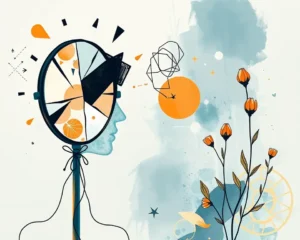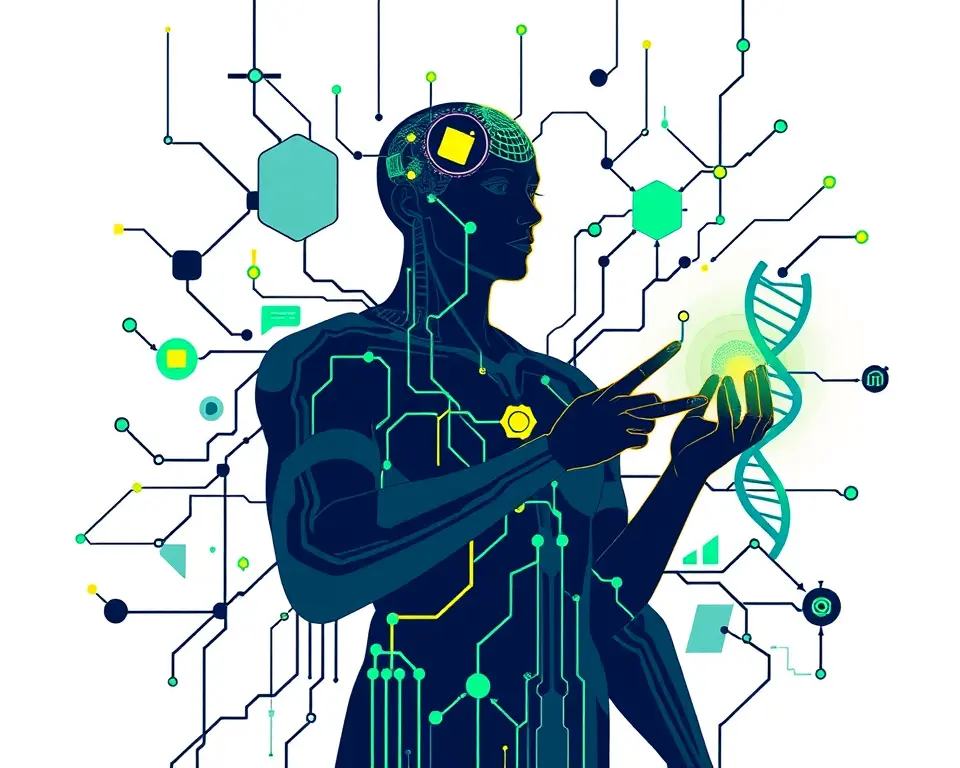Biohacking, a term gaining traction in the health and wellness sphere, represents a proactive and personalized approach to optimizing your body and mind. But what exactly is it, and how can you integrate it into your life for improved well-being? Let’s dive into this exciting trend, exploring its various facets, benefits, and potential risks, to help you make informed decisions about your health journey.
What is Biohacking?
Biohacking, at its core, is about understanding your own biology and making intentional changes to enhance your health, performance, and overall well-being [4, 33]. It’s a DIY approach to self-care that combines science, technology, and a willingness to experiment with your own body and mind [4, 20, 30]. The term “hacking” in this context doesn’t imply anything illegal or malicious; instead, it refers to finding clever and innovative ways to optimize your biological systems [6, 8].
Essentially, biohacking is about becoming the best version of yourself by learning how your body works and making adjustments that help it function at its best [33]. It’s a personalized process that involves self-experimentation and data collection, recognizing that what works for one person may not work for another [22].
The Origins of Biohacking
Biohacking’s roots can be traced back to the quantified self-movement, which emerged in the early 2000s [20]. This movement was fueled by the development of wearable fitness trackers and smartphone apps that allowed individuals to monitor their health metrics [20]. As more people began sharing their experiences and insights online, the movement gained momentum [20]. The term “biohacking” itself has been around since at least 1988, gaining further traction in the San Francisco programmer and maker communities around 2005 [6].
Biohacking vs. DIY Biology
While the terms “biohacking” and “DIY biology” are sometimes used interchangeably, they represent distinct but related concepts [6].
- DIY Biology (DIYbio): This is a biotechnological social movement where individuals, communities, and small organizations study biology and life science using methods similar to traditional research institutions [6]. DIY biology often involves individuals with limited formal training who mentor others, focusing on open-source innovation and community learning [6].
- Biohacking: A broader term encompassing various approaches to self-improvement through biological manipulation [2, 7]. This can include lifestyle changes, nutrition, and technology, as well as more experimental practices like genetic engineering [2, 7].
Types of Biohacking
Biohacking encompasses a wide range of practices, from simple lifestyle adjustments to more advanced technological interventions [2, 3]. Here are some of the most common types:
1. Nutrigenomics
This area focuses on how your genes interact with the food you eat [2, 3, 21]. By understanding your genetic makeup, you can tailor your diet to optimize your health and prevent or treat diseases [3, 21]. This might involve avoiding certain foods linked to health conditions you’re predisposed to or consuming foods that can help prevent those conditions [3].
2. DIY Biology (DIYbio)
DIY biology is a form of biohacking where individuals with some scientific background conduct structured experiments on themselves outside traditional lab settings [2, 21]. It emphasizes open-source knowledge sharing and making biotechnology accessible to non-experts [6, 21].
3. Grinder Biohacking
This subculture focuses on human augmentation through technological means, often involving implants and body modifications [2, 3, 5]. Grinders aim to enhance natural capabilities or interact with technology in novel ways, often identifying with transhumanist and biopunk ideologies [5]. Examples include implanting magnets or microchips under the skin [3, 5].
4. Lifestyle Biohacking
This involves making intentional changes to your daily habits and environment to optimize your health [4, 25]. This can include:
- Dietary changes: Adjusting your diet, experimenting with intermittent fasting, or using supplements [3, 30].
- Exercise routines: Implementing targeted exercise plans to improve strength, endurance, and overall fitness [14].
- Sleep optimization: Improving sleep quality through techniques like regulating your circadian rhythm and using sleep trackers [2, 7].
- Stress management: Incorporating practices like meditation and mindfulness to reduce stress and improve mental well-being [2, 11].
5. Technological Biohacking
This involves using wearable devices, biofeedback tools, and other technologies to monitor and enhance your health and performance [7, 14]. Examples include:
- Wearable trackers: Using smartwatches and fitness bands to track activity levels, sleep patterns, and other health metrics [2, 7].
- Brainwave entrainment: Using technology to influence brainwave patterns for improved focus and relaxation [7].
- Light therapy: Using specialized lights to regulate circadian rhythms and improve mood [4, 7].
Popular Biohacking Techniques
Here are some specific biohacking techniques you can explore:
1. Intermittent Fasting
This involves cycling between periods of eating and fasting [2, 30]. Intermittent fasting can improve metabolic health, promote cellular repair, and enhance brain function [30]. Common methods include the 16/8 method (16 hours of fasting, 8 hours of eating) and the 5:2 diet (normal eating for 5 days, restricted calories for 2 days) [30].
2. Optimized Sleep
Prioritizing sleep and optimizing your sleep environment can significantly impact your overall health [8, 9]. Strategies include:
- Maintaining a consistent sleep schedule: Going to bed and waking up at the same time each day [8].
- Creating a dark, quiet, and cool sleep environment: Using blackout curtains, earplugs, and adjusting the thermostat [8].
- Limiting blue light exposure before bed: Avoiding screens or using blue light filters in the evening [3, 8].
3. Cold Exposure
Exposing yourself to cold temperatures, such as through ice baths or cold showers, can have several benefits [2, 9]. Cold exposure can reduce inflammation, improve mood, and enhance cardiovascular health [9, 29]. Aim for water temperatures between 41 and 59°F (5 to 15°C) for 20 seconds to 10 minutes [9].
4. Meditation and Mindfulness
Practicing meditation and mindfulness can help reduce stress, improve focus, and enhance emotional well-being [2, 11]. Regular meditation can alter brain chemistry, affecting the amygdala (the part of the brain that processes emotions) [11].
5. Nootropics
These are supplements or drugs that enhance cognitive function [2, 7, 30]. Common nootropics include caffeine, L-theanine, and omega-3 fatty acids [30]. While some nootropics are relatively safe, others can have potential risks and should be used with caution [21].
6. Red Light Therapy
Exposure to red and near-infrared light can stimulate cellular function and promote healing [3, 25]. Red light therapy is used for various purposes, including reducing inflammation, improving skin health, and promoting muscle recovery [3, 25].
7. Wearable Technology
Using wearable devices like smartwatches and fitness trackers can provide valuable data about your health [2, 7, 14]. This data can help you make informed decisions about your lifestyle and track your progress over time [14, 22].
Benefits of Biohacking
Biohacking offers a range of potential benefits, including:
- Improved Physical Performance: Biohacking can optimize your body’s functions, making you stronger, faster, and more resilient [10, 14]. It can enhance endurance, muscle growth, and overall physical health [10, 14].
- Enhanced Mental Clarity and Focus: Techniques like meditation, nootropics, and brain training can improve cognitive function, memory, and stress resilience [10, 14].
- Increased Energy and Better Sleep: Biohacking strategies like sleep optimization, circadian rhythm management, and intermittent fasting can boost daily energy levels and enhance mood [10].
- Potential for Longevity and Disease Prevention: By reducing inflammation, improving gut health, and adopting longevity-focused habits, biohackers aim to slow down aging and prevent disease [10, 14].
- Improved Mental Health: Certain biohacking techniques, such as regular exercise, mindfulness, and optimized sleep, can positively impact mental health, reducing symptoms of stress, anxiety, and depression [14].
Risks and Ethical Considerations
While biohacking offers exciting possibilities, it’s essential to be aware of the potential risks and ethical considerations involved [2, 7].
- Health Risks: Self-experimentation without professional guidance can lead to mistakes, such as incorrect dosages of supplements or poorly executed diets [19, 27]. Some practices, like genetic manipulation and self-administration of unregulated drugs, can pose serious health risks [7, 17].
- Lack of Regulation: The biohacking market is largely unregulated, meaning that the safety and efficacy of some products and practices may not be adequately evaluated [19, 27].
- Ethical Concerns: Some biohacking practices, particularly those involving genetic engineering or implantable devices, raise ethical questions about the limits of human enhancement and the potential for unequal access to these technologies [3, 17, 19].
- Dependence on Technology: Over-reliance on technology for tracking and monitoring can lead to a loss of body awareness and potential anxiety or obsession [19].
- Unrealistic Expectations: Biohacking culture can sometimes promote unrealistic expectations and exaggerated claims, potentially leading to disappointment or unhealthy behaviors [28].
How to Get Started with Biohacking
If you’re interested in exploring biohacking, here are some tips for getting started safely and effectively:
- Start Simple: Begin with basic biohacks like getting more sunlight, walking in nature, reducing blue light exposure, or trying intermittent fasting [3]. These changes are easy to implement and don’t require significant financial investment [3].
- Consult a Healthcare Professional: Before trying more involved or intense biohacking techniques, talk to your doctor [3]. They can advise you on the best options for your health, medical conditions, and fitness level [3].
- Develop a Plan and Set Achievable Goals: Knowing your goals and how you plan to achieve them will help you stay on track [3].
- Start Slowly: Implementing changes too quickly can overwhelm your body [3]. Make one or two changes at a time to track your progress and determine what works best for you [3].
- Track Your Progress: Use wearable devices, journals, or other tools to monitor your health metrics and track the effects of your biohacking interventions [22, 33].
- Prioritize Evidence-Based Practices: Focus on biohacking techniques that are supported by scientific research [30]. Be wary of exaggerated claims and practices that lack evidence [28].
- Listen to Your Body: Pay attention to how your body responds to different biohacking interventions [3]. If you experience any negative side effects, stop the practice and consult with a healthcare professional [3, 19].
The Future of Biohacking
Biohacking is a rapidly evolving field with the potential to transform how we approach health and well-being [20, 29]. As technology advances and our understanding of biology deepens, we can expect to see even more innovative and personalized biohacking techniques emerge [20, 29]. However, it’s crucial to approach biohacking with a critical and informed mindset, prioritizing safety, ethics, and evidence-based practices [17, 27].
Biohacking in India
Biohacking is also making its presence felt in India, with increasing interest in personalized health optimization [33, 35, 36, 37]. Entrepreneur and actor Suniel Shetty has invested in a DIY healthcare venture called “The Biohacker,” aiming to revolutionize health in India [36]. Fitness consultant Ben Greenfield is also working with Mukesh Bansal to establish biohacking centers in India [37].
Conclusion
Biohacking offers a unique and empowering approach to taking control of your health and optimizing your well-being [30, 33]. By combining scientific knowledge, technological tools, and a willingness to experiment, you can unlock your body’s full potential and live a healthier, happier life [20, 33]. However, it’s essential to approach biohacking with caution, prioritize evidence-based practices, and consult healthcare professionals when necessary [30]. This ensures a safe and effective exploration of biohacking’s potential to improve your quality of life [30].










